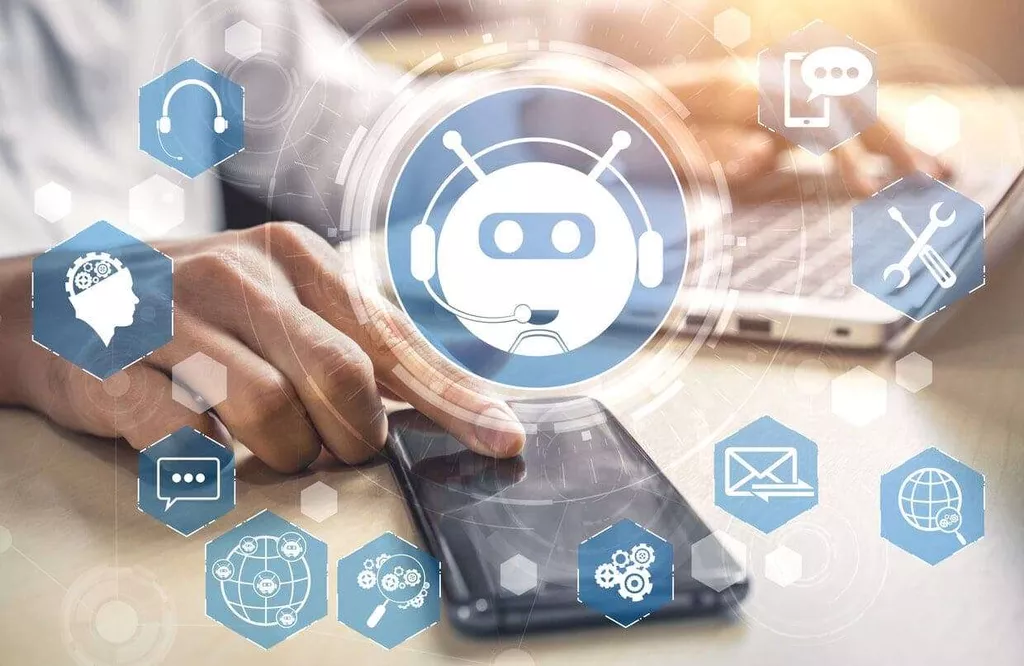How generative AI will revolutionize your business
How gen AI will change business as we know it
We can already see a shift in perspective — users are embracing AI more willingly than they did initially. Gen AI’s capacity to simulate scenarios and generate alternative outcomes can be valuable in strategic decision-making and risk assessment. It can be combined with other AI tools like predictive modeling and data analytics to explore different possibilities and optimize business strategies. Generative AI powered language translation tools can assist businesses in GBS operations that require communication across different languages and cultures. This capability can enable seamless collaboration and expansion across global markets. Organizations can begin incorporating various tools and systems to harness these benefits today.
- An LLM learns patterns and structures from large amounts of data upon which generative AI is based.
- As revealed by a Pew Research Center survey from May 2023, only 59% of American adults are aware of ChatGPT, and a mere 14% have engaged with this innovative platform.
- Generative AI opens up a realm of creativity, allowing designers to produce dynamic and interactive content that captivates users across various platforms.
- Zeta Global is the AI-powered marketing cloud that leverages proprietary AI and trillions of consumer signals to make it easier to acquire, grow, and retain customers more efficiently.
Balancing these strides with proportionate consideration of risk management alongside accountability and potential misuse will ease concerns and limit unforeseen negative impact. Consider the potential impact on customers or employees for both finance and HR processes. Choose the department where the application of generative AI can lead to a significant improvement in customer experience or employee satisfaction. Generative AI can help in identifying anomalies and patterns that may indicate fraudulent activities.
Generative AI’s Role in Shaping Tomorrow’s User Experiences:
The latter technology is quickly becoming prominent across enterprise IT projects and corporate functions, with customer service, software development and life sciences among the leading areas. Some companies are exploring LLM-based Knowledge Management in collaboration with leading commercial LLM providers. Morgan Stanley is collaborating with OpenAI’s GPT-3 to refine training for wealth management content. This will allow financial advisors to search for knowledge within their firm and easily create content tailored for clients. The knowledge outputs from the LLMs could also need to be edited or reviewed before they are applied.
- You will possess the frameworks necessary for implementing real-world generative-AI strategies within your company, and you’ll have the ability to make a positive, innovative impact within your role.
- As AI technologies become more pervasive, they bring forth profound societal changes, ranging from shifts in employment dynamics to redefining the boundaries of privacy.
- Automating the development of text, photos, videos, and music revolutionizes content creation while increasing productivity and lowering production costs.
- Furthermore, over 75% believe that Generative AI-based applications will elevate their interactions with companies.
- These datasets contain a wealth of information and examples that the AI algorithms can learn from.
- Design tools such as Adobe Sensei and Sketch2React employ generative AI to generate design variations based on user input.
GenAI can undoubtedly add value to the wellness landscape, offering innovative ways to enhance emotional, mental, and physical well-being. However, to fully harness its benefits, we must remain cognizant of its limitations and potential risks. At this stage, companies would be best served to leverage GenAI tools only as complements to humans. It’s fundamentally changing the way businesses operate, and its core value proposition is efficiency, speed of delivery, and simplification of processes.
Assistive Coding and Product Design
We would love to keep you informed about other Economist events, newly-released content, our best subscription offers, and great new product offerings from The Economist Group. There is also the issue of cross-border data sharing and the need to ensure that data policy complies with local regulations. Companies must comply with different government approaches to data protection while ensuring their use of data minimises bias and respects intellectual property rights. Learn more about our latest AI-driven innovations with the Freshworks Q2 ’23 Launch Event. When answering a question, humans will often qualify with “I’m not sure, but…” or “This is just a guess…” depending on the level of certainty they have about their answer. Research shows 67% of senior IT leaders are prioritizing generative AI for their business within the next 18 months, with one-third (33%) naming it as a top priority.
The modern and future of work is now focused on harnessing the power of generative AI to enhance productivity and efficiency. There is a growing need for businesses to harness the true power of generative AI and drive innovation by integrating generative AI tools into their workflows. They can streamline processes, automate tasks, and unlock new opportunities for growth. We tailor our solutions to your vision and goals and carefully analyze your business processes, data, and objectives to develop a strategy that can scale with your business growth. Binariks is your trusted partner in implementing AI technologies and unlocking their transformative potential. These diverse industries represent just a glimpse into the transformative potential of generative AI for enterprises.
Navigating the Future of Game Development in the Age of AI
This opens up new avenues for monetization and differentiation in an increasingly competitive market. Generative AI is poised to revolutionize industries and reshape the business landscape, presenting a game-changing potential for companies. With its ability to create original content by learning from existing data, this technology empowers automation of tasks once performed by humans. Increased efficiency, heightened productivity, cost reduction, and unprecedented growth prospects. Businesses that successfully harness generative AI stand to gain a substantial competitive edge in the evolving market dynamics. Gen AI is poised to revolutionize the customer experience landscape by ushering in an era of unprecedented hyper-personalization.
The Emergence of the Chief Generative AI Officer – Hunt Scanlon Media
The Emergence of the Chief Generative AI Officer.
Posted: Wed, 04 Oct 2023 07:00:00 GMT [source]
Get relevant insights, leading perspectives and exclusive research delivered right to your inbox. With the potential to better simplify, personalize, and democratize access to new and existing applications, generative AI is for every business—the race, is on. Designers and businesses must proactively address these concerns by implementing stringent data protection measures, and ensure transparency and fairness in algorithmic decision-making. „AI shouldn’t be the only thing that business and technology leaders are relying on,“ Madan said. But among digital leaders, „AI is certainly top of mind within transformation programs and strategies,“ he added.
How AI is changing digital transformation
In natural language processing, large language models using generative techniques have pushed the boundaries of what AI can achieve in tasks like text completion, translation, and summarization. Overall, the potential risks and ethical considerations should be fully considered with the rising hype of generative AI. There are exciting potential applications of these technologies as researchers make massive strides in launching new models.
Transformers were a new form of neural networks and deep learning that formed the basis of many AI technologies today. Businesses that actively conduct R&D to improve their products and expand their offerings can enjoy more than just a higher estimated valuation than those that don’t. When businesses are investing their own resources into driving unique innovation, they have the opportunity to stretch their dollars further. It’s encouraging to see that early stage companies are focusing on ways to improve their research and development capabilities with the latest generative AI toolkits. That’s because research shows that even major corporations that put a greater emphasis on R&D (compared to Sales and Marketing, for instance) ultimately enjoy a higher long-term valuation.
By simulating various scenarios and generating predictive models, generative AI can help businesses anticipate potential risks, optimize resource allocation, and make more confident and accurate decisions. It can be used to generate synthetic medical images that can aid in the diagnosis and treatment of various diseases. By training the models on a large dataset of medical images, they can learn to identify patterns and anomalies that might be difficult for human experts to detect. This can potentially lead to more accurate and timely diagnoses, ultimately improving patient outcomes.
Gain insight from top innovators and thought leaders in the fields of IT, business, enterprise software, startups, and more. The most important thing to remember when using generative AI in your business is that these tools are only as effective as the users, inputs, and procedures that surround them. Make sure all employees are trained and given the resources they need to use generative AI in their work effectively, and you’ll achieve new levels of automation, smart assistance, and productivity in your organization. Generative AI models have already proven their ability to quickly generate natural language content affordably and at scale, which has made these models particularly enticing for organizations that want to outsource content writing. Most businesses have a customer service component that could be improved with more consistent training and customer-first communication and designs. This vision is born from our use-case-driven AI-modeling approach and our rich domain-specific data.
Knowledge Centers Entities, people and technologies explored
Businesses constantly seek for innovative ways to improve productivity, attract customers, and gain a competitive edge. Generative Artificial Intelligence (Generative AI), among the plethora of transformational technologies that have emerged recently, stands out. This cutting-edge area of AI focuses on building models that can create original material, including music, images, text, and even entire virtual worlds.
Embracing the power of Gen AI for business growth opens a world of endless possibilities. By integrating artificial intelligence into strategies, businesses can streamline operations, gain valuable insights, and make data-driven decisions that lead to remarkable success. Gen AI empowers businesses to personalize customer experiences, optimize processes, and stay one step ahead of the competition. As we embark on this transformative journey, we push the boundaries of what’s possible and foster a culture of innovation. If you’re ready to take your business to new heights with cutting-edge AI solutions, look no further than NextGen Invent. As a leading AI-enabled solution development company, we are committed to helping businesses unlock their full potential through Gen AI.
Generative AI’s Transformative Impact on Manufacturing: Unleashing the Power of Industrial Data – Machine Design
Generative AI’s Transformative Impact on Manufacturing: Unleashing the Power of Industrial Data.
Posted: Mon, 20 Nov 2023 08:00:00 GMT [source]
These models can understand the nuances of language, including grammar, syntax, and semantics, and generate text that is indistinguishable from human-written content. This exciting era calls for a nuanced understanding of AI’s capabilities and implications. As we continue to embrace and leverage this technology, it is imperative to do so with foresight, responsibility, and a commitment to inclusive growth. One of the most significant impacts of AI is its potential to reshape the employment landscape. The projection of automating tasks equivalent to 300 million full-time jobs is a scenario that demands attention.

The retail and e-commerce sectors are increasingly leveraging the power of generative AI to enhance customer experiences and drive sales. Generative AI models can analyze customer data, preferences, and buying patterns to generate personalized recommendations and offers. By tailoring the shopping experience to individual customers, businesses can boost customer engagement, increase conversions, and foster loyalty. Chatbots powered by generative AI models can engage in natural language conversations with customers, providing personalized recommendations, answering queries, and resolving issues in real-time. By automating customer support, businesses can improve customer satisfaction, reduce response times, and free up human resources for more critical tasks.
Our new report provides insight into how generative AI will orchestrate tasks, spur new ideas, sharpen decision making and unify the workplace with a common entry point to how we work. In the first of this two-part series, we explore how CFOs can realize the benefits and factors they need to succeed and deliver value. Rob was the first to respond, stating that it was definitely going to change things. He team are leveraging generative AI in the conventional PNR field, enhancing designs, and planning to integrate them into design technology and co-optimization strategies.
Read more about Transformative Impact of Generative AI for Business here.


